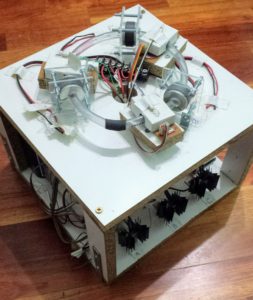In the realm of modern physics, particle accelerators stand as titans, capable of unraveling the minutiae of matter and the very fabric of the universe. Constructing such a sophisticated apparatus within the confines of a garage may sound like an audacious venture, yet the confluence of ingenuity and scientific curiosity offers an alluring challenge. To embark upon the journey of building a particle accelerator in your garage is to don the mantle of the modern Prometheus, igniting the flame of knowledge while treading carefully through the labyrinth of particle physics.
Before embarking on this ambitious odyssey, it is paramount to delineate the fundamental principles behind particle accelerators. At their essence, these devices propel charged particles, such as electrons or protons, to exceedingly high velocities, allowing them to collide with other particles or targets. These collisions offer insights into the fundamental components of matter, unveiling the secrets held within the atomic nucleus and beyond.
**Understanding Safety Protocols**
The first tenet when delving into this realm is an unwavering commitment to safety. Particle accelerators inherently involve high voltages, radiation, and other potential hazards. A thorough investigation of the necessary safety protocols is essential. Familiarizing oneself with regulations regarding radiation safety and acquiring appropriate shielding materials will be indispensable. The workspace must be fortified with barriers and warning signage, ensuring a secure environment not only for yourself but also for others who might inadvertently wander into your domain of experimentation.
**Deciphering Design: Types of Particle Accelerators**
The next crucial phase involves the selection of an accelerator type. There are distinct varieties, namely linear accelerators (linacs) and circular accelerators (synchrotrons). Linear accelerators accelerate particles in a straight line, whereas circular accelerators guide particles along a circular path using magnetic fields. A linear accelerator may be more conducive to a home-built venture due to its comparatively simpler design. Consider the metaphor of a train: a linear accelerator resembles a straightforward loco on a track, while a synchrotron functions like a city’s tangled metro system, with its complexities demanding extensive knowledge and resources.
**Engineering Essentials: Components and Materials**
Crafting an accelerator necessitates an assortment of materials and components. The heart of any accelerator lies within its vacuum chamber, which allows particles to traverse unfettered by atmospheric interference. Materials such as stainless steel or glass can be utilized, although the former offers greater durability. Emphasis should be placed on achieving a robust vacuum, as even minimal air can impede particle acceleration.
Next, one must procure a power supply capable of generating the requisite voltage levels. High-voltage power supplies, often functioning in the kilovolt range, will be critical in energizing the accelerator’s electrodes. Acquiring components like radiofrequency cavities, which resonate at specific frequencies to impart energy to the particles, will be vital as well.
**The Electrostatic Whirlwind: Building a Simple Particle Accelerator**
A straightforward design may involve constructing a small electrostatic particle accelerator, which utilizes high voltage to accelerate charged particles. Begin by assembling an ion source, which will generate the initial particles for acceleration. This can be achieved using a simple ionization source, such as a high-voltage power supply coupled with a gas source like air or hydrogen.
Next, fabricate the accelerator tube, integrating the necessary electrodes for acceleration and focusing. The alignment of these components is critical; even a minor deviation can result in the dispersion of particles. This part of the project underscores the importance of precision, as the slightest misalignment can lead to catastrophic failures in high-energy physics experiments.
**Magnetic Magnetism: Steering Particles**
Utilizing electromagnets or permanent magnets is essential for directing the path of accelerated particles. The forces exerted by these magnetic fields allow for the manipulation and control of trajectory, analogous to a conductor guiding an orchestra, ensuring that every particle harmonizes towards its destined encounter. The strategic placement of these magnets within the accelerator is key, as one miscalculation could send particles veering off course.
**Instrumentation: Detectors and Data Acquisition**
The culmination of the acceleration process culminates in the detection and analysis of results. Integrated detection systems must be installed to collect data from particle collisions. Devices such as scintillation counters or semiconductor detectors can yield valuable information regarding the properties of the accelerated particles. This stage of the project reflects the symbiotic relationship between experimentation and analysis, evoking the image of a painter capturing the essence of a subject through the delicate strokes of a brush.
**Innovation and Iteration: Embracing the Complexity**
Building a particle accelerator is no trivial endeavor; it demands not only technical acumen but creative problem-solving skills. With each step taken, it is vital to embrace the potential for failure and the iterative process of innovation. The allure of research often lies in the unexpected twists that challenge preconceived notions, inviting one to rethink and refine solutions in real-time.
**Community and Collaboration: The Power of Knowledge Sharing**
Lastly, no journey through the world of particle physics should be undertaken in isolation. Engaging with online forums, local physics clubs, or academic institutions can provide access to invaluable resources, insights, and collaboration opportunities. Knowledge-sharing fosters an environment where collective growth is attainable, enhancing the journey towards discovery.
In conclusion, the ambition to build a particle accelerator within the confines of a garage unfolds as an intricate tapestry of engineering, physics, and creativity. Much like the quest for the mythical philosopher’s stone, this pursuit is steeped in fecund imagination, demanding both rigour and vision. As you navigate this complex landscape, may the sparks of curiosity illuminate the path to knowledge, revealing the elemental truths of our universe.












